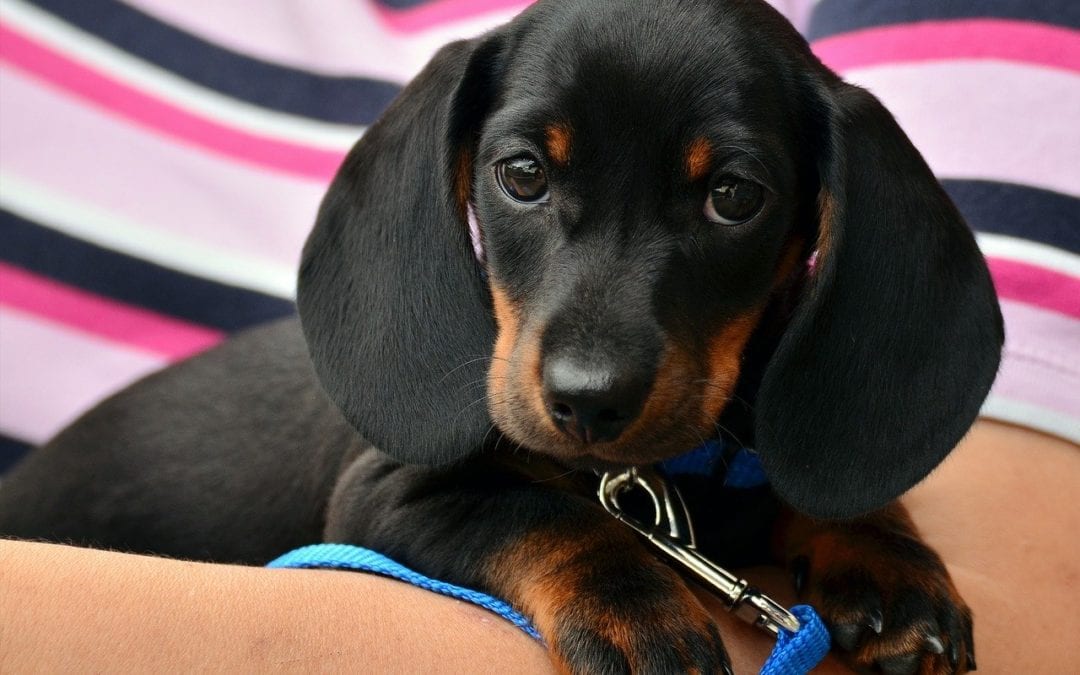Congratulations! Adding a new puppy to your family is an exciting event with many fulfilling years of special companionship ahead of you. Puppies come with a lot of responsibility, though. One of the essential pieces of their care is proper socialization. Learn what that means and what you can do.
One of the best ways to show your pup how much you love her is through proper, lifelong socialization. Without positively exposing your puppy to new sights, sounds, people, pets, and places during the prime socialization window of 3 to 14 weeks of age, your pet may be nervous and fearful in new situations or may develop generalized anxiety.
Although many people believe socialization means exposing a puppy to as many new things as possible when she’s young, socialization has a much deeper meaning. According to the American Veterinary Medical Association, socialization is the process of preparing your dog to enjoy interactions with other dogs, and to be comfortable with other animals, people, places, and activities. Before undertaking this important task that will prepare your new best friend for her future, read the following tips.
Make every experience positive
Proper socialization is based on positive experiences, as negative experiences only serve to frighten your puppy and poorly influence future interactions. To build a positive foundation, introduce your pup to new sights, sounds, people, and pets by pairing novel situations with high-value treats. Food is a wonderful distraction and reward for puppies, and small bites of chicken breast, hot dogs, or string cheese will teach your pet that the world is not that scary.
Move your puppy at a comfortable pace
Avoid rushing into new situations, which can frighten your puppy. While you wish your puppy would stop barking at the neighbor’s children riding their bikes, rapidly coaxing her too close will scare her more. Instead, take each step slowly, pairing it with tasty treats. Have her meet one child at a time on her own terms, letting her sniff and say hello without the child reaching to pet her. Once your pup is comfortable, allow her to sniff the bike, rewarding her for each brave step. If, at any point, your puppy shows anxiety or fear, retreat to the last positive step, and advance more slowly once she is relaxed.
It’s important to bring your puppy in for a full nose-to-tail exam and to get them familiar with our veterinary hospital from a young age. Contact us to schedule an appointment!

